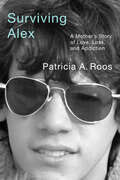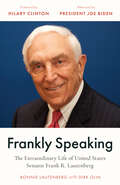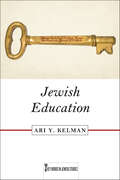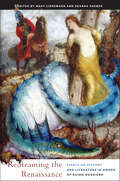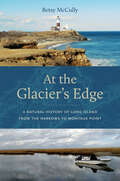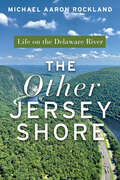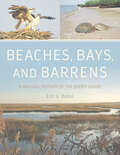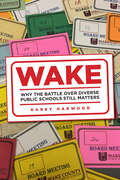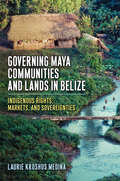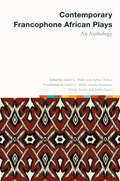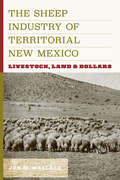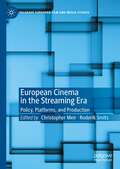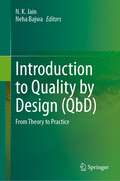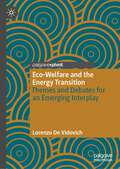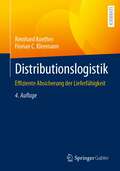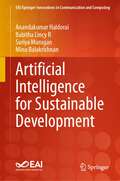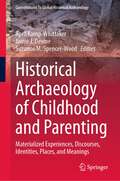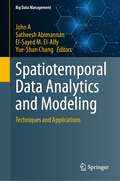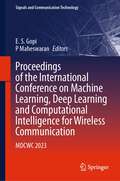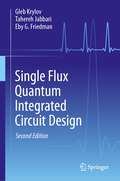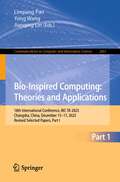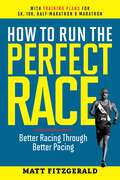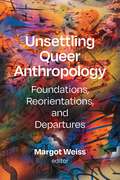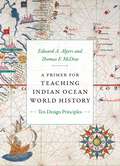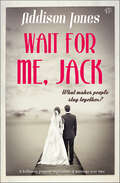- Table View
- List View
Surviving Alex: A Mother’s Story of Love, Loss, and Addiction
by Patricia A. RoosIn 2015, Patricia Roos’s twenty-five-year-old son Alex died of a heroin overdose. Turning her grief into action, Roos, a professor of sociology at Rutgers University, began to research the social factors and institutional failures that contributed to his death. Surviving Alex tells her moving story—and outlines the possibilities of a more compassionate and effective approach to addiction treatment. Weaving together a personal narrative and a sociological perspective, Surviving Alex movingly describes how even children from “good families” fall prey to addiction, and recounts the hellish toll it takes on families. Drawing from interviews with Alex’s friends, family members, therapists, teachers, and police officers—as well as files from his stays in hospitals, rehab facilities, and jails—Roos paints a compelling portrait of a young man whose life veered between happiness, anxiety, success, and despair. And as she explores how a punitive system failed her son, she calls for a community of action that would improve care for substance users and reduce addiction, realigning public health policy to address the overdose crisis.
Frankly Speaking: The Extraordinary Life of United States Senator Frank R. Lautenberg
by Bonnie LautenbergFrank Lautenberg was the embodiment of the American dream. The son of Eastern European immigrants who toiled in the factories of northern New Jersey, he rose to become a Fortune 500 CEO and eventually a five-term US senator. Yet his is not a simple rags-to-riches tale, but is rather the story of someone who used his newfound affluence and influence to improve the lives of ordinary Americans. Told by one of the people who knew him best, his widow Bonnie, Frankly Speaking reveals the political strategies that made Lautenberg one of the Senate’s most powerful advocates for the health and safety of America’s citizens. He championed seemingly minor, unglamorous reforms that made a big difference to everyday lives, from raising the national drinking age to preventing domestic abusers from purchasing guns. These campaigns earned him powerful enemies in the alcohol, tobacco, and firearms industries, and he was subjected to some of the most brutal campaign mudslinging in American history. Yet, as this inspiring biography reveals, New Jersey’s longest-serving senator was not afraid to take big political risks if it meant standing up for his principles, whether that meant opposing the Iraq War or protecting LGBTQ and women’s rights.
Jewish Education (Key Words in Jewish Studies)
by Ari Y KelmanMost writing about Jewish education has been preoccupied with two questions: What ought to be taught? And what is the best way to teach it? Ari Y Kelman upends these conventional approaches by asking a different question: How do people learn to engage in Jewish life? This book, by centering learning, provides an innovative way of approaching the questions that are central to Jewish education specifically and to religious education more generally. At the heart of Jewish Education is an innovative alphabetical primer of Jewish educational values, qualities, frameworks, catalysts, and technologies which explore the historical ways in which Jewish communities have produced and transmitted knowledge. The book examines the tension between Jewish education and Jewish Studies to argue that shifting the locus of inquiry from “what people ought to know” to “how do people learn” can provide an understanding of Jewish education that both draws on historical precedent and points to the future of Jewish knowledge.
Redreaming the Renaissance: Essays on History and Literature in Honor of Guido Ruggiero (The Early Modern Exchange)
by Douglas G. Biow Alessandro Arcangeli Suzanne Magnanini Joanne M. Ferraro Paula Findlen Julia L. Hairston Konrad Eisenbichler Meredith K. Ray Courtney Quaintance Albert Russell Ascoli Nicholas Terpstra Massimo RospocherRedreaming the Renaissance seeks to remedy the dearth of conversations between scholars of history and literary studies by building on the pathbreaking work of Guido Ruggiero to explore the cross-fertilization between these two disciplines, using the textual world of the Italian Renaissance as proving ground. In this volume, these disciplines blur, as they did for early moderns, who did not always distinguish between the historical and literary significance of the texts they read and produced. Literature here is broadly conceived to include not only belles lettres, but also other forms of artful writing that flourished in the period, including philosophical writings on dreams and prophecy; life-writing; religious debates; menu descriptions and other food writing; diaries, news reports, ballads, and protest songs; and scientific discussions. The twelve essays in this collection examine the role that the volume’s dedicatee has played in bringing the disciplines of history and literary studies into provocative conversation, as well as the methodology needed to sustain and enrich this conversation.
At the Glacier’s Edge: A Natural History of Long Island from the Narrows to Montauk Point
by Betsy McCullyVast salt marshes, ancient grasslands, lush forests, pristine beaches and dunes, and copious inland waters, all surrounded by a teeming sea. These are probably not the first things you imagine when you think of Long Island, but just beyond its highways and housing developments lies a stunning landscape full of diverse plant and animal life. Combining science writing, environmental history, and first-hand accounts from a longtime resident, At the Glacier’s Edge offers a unique narrative natural history of Long Island. Betsy McCully tells the story of how the island was formed at the end of the last ice age, how its habitats evolved, and how humans in the last few hundred years have radically altered and degraded its landscape. Yet as she personally recounts the habitat losses and species declines she has witnessed over the past few decades, she describes the vital efforts that environmental activists are making to restore and reclaim this land—from replanting salt marshes, to preserving remaining grasslands and forests, to cleaning up the waters. At the Glacier’s Edge provides an in-depth look at the flora, fauna and geology that make Long Island so special.
The Other Jersey Shore: Life on the Delaware River
by Michael Aaron RocklandRiver otters, black bears, and red foxes drink from its clear waters. Prickly pear cacti grow from the red shale cliffs that overlook it, while on the river near Bordentown lies the archeological remnants of a sprawling estate built by the former King of Spain, Napoleon’s brother, who lived there for almost twenty years. You might imagine this magical and majestic waterway is located in some faraway land. But in fact, it’s the backbone and lifeblood of the Garden State: the Delaware River. The Other Jersey Shore takes readers on a personal tour of the New Jersey portion of the Delaware River and its surroundings. You will learn about the role that the river played in human history, including Washington’s four crossings of the Delaware during the Revolutionary War. And you will also learn about the ecological history of the river itself, once one of the most polluted waterways in the country and now one of the cleanest, providing drinking water for 17 million people. Michael Aaron Rockland, a long-time New Jersey resident, shows readers his very favorite spots along the Delaware, including the pristine waterfalls and wilderness in the Delaware Water Gap recreation area. Along the way, he shares engrossing stories and surprising facts about the river that literally defines western New Jersey.
Beaches, Bays, and Barrens: A Natural History of the Jersey Shore
by Eric G. BolenThe Jersey Shore attracts millions of visitors each year, drawn to its sandy beaches. Yet New Jersey’s coastline contains a richer array of biodiverse habitats than most tourists realize, from seagrass meadows to salt marshes to cranberry bogs. Beaches, Bays, and Barrens introduces readers to the natural wonders of the Jersey Shore, revealing its unique ecology and fascinating history. The journey begins with the contributions and discoveries of early naturalists who visited the region and an overview of endangered species and natural history, followed by chapters that explore different facets of the shore’s environments. These start with sandy beaches and dunes and culminate in the engaging Pine Barrens, the vital watershed for much of the state’s varied coastline. Along the way, readers will also learn about whaling, decoy carvers, an extinct duck, and the cultivation of wild blueberries. Including over seventy color photographs, the book also features twenty-three infoboxes that go deep into areas of ecological or historical interest, such as the Forsythe National Wildlife Refuge or the Jaws-like shark attacks of 1916. From Cape May to Sandy Hook, biologist Eric G. Bolen takes you on a guided tour of the Jersey Shore’s rich ecological heritage.
Wake: Why the Battle over Diverse Public Schools Still Matters (Critical Issues in American Education)
by Karey Alison HarwoodThe Wake County Public School System was once described as a beacon of hope for American school districts. It was both academically successful and successfully integrated. It accomplished these goals through the hard work of teachers and administrators, and through a student assignment policy that made sure no school in the countywide district became a high poverty school. Although most students attended their closest school, the “diversity policy” modified where some students were assigned to make sure no school had more than 40% of its students qualifying for free or reduced-price lunch or more than 25% performing below grade level. When the school board election of 2009 swept into office a majority who favored “neighborhood schools,” the diversity policy that had governed student assignment for years was eliminated. Wake: Why the Battle Over Diverse Public Schools Still Matters tells the story of the aftermath of that election, including the fierce public debate that ensued during school board meetings and in the pages of the local newspaper, and the groundswell of community support that voted in a pro-diversity school board in 2011. What was at stake in those years was the fundamental direction of the largest school district in North Carolina and the 14th largest in the U.S. Would it maintain a commitment to diverse schools, and if so, how would it balance that commitment with various competing interests and demands? Through hundreds of published opinion articles and several in depth interviews with community leaders, Wake examines the substance of that debate and explores the community’s vision for public education. Wake also explores the importance of knowing the history of a place, including the history of school segregation. Wake County’s example still resonates, and the battle over diverse public schools still matters, because owning responsibility for the problem of segregated schools (or not) will shape the direction of America’s future.
Governing Maya Communities and Lands in Belize: Indigenous Rights, Markets, and Sovereignties
by Laurie Kroshus MedinaConfronting a debt crisis, the Belizean government has strategized to maximize revenues from lands designated as state property, privatizing lands for cash crop production and granting concessions for timber and oil extraction. Meanwhile, conservation NGOs have lobbied to establish protected areas on these lands to address a global biodiversity crisis. They promoted ecotourism as a market-based mechanism to fund both conservation and debt repayment; ecotourism also became a mechanism for governing lands and people—even state actors themselves—through the market. Mopan and Q’eqchi’ Maya communities, dispossessed of lands and livelihoods through these efforts, pursued claims for Indigenous rights to their traditional lands through Inter-American and Belizean judicial systems. This book examines the interplay of conflicting forms of governance that emerged as these strategies intersected: state performances of sovereignty over lands and people, neoliberal rule through the market, and Indigenous rights-claiming, which challenged both market logics and practices of sovereignty.
Contemporary Francophone African Plays: An Anthology (Scènes francophones: Studies in French and Francophone Theater)
by Edited by Judith G. MillerBringing together in English translation eleven Francophone African plays dating from 1970 to 2021, this essential collection includes satirical portraits of colonizers and their collaborators (Bernard Dadié’s Béatrice du Congo; Sony Labou Tansi’s I, Undersigned, Cardiac Case; Sénouvo Agbota Zinsou’s We’re Just Playing) alongside contemporary works questioning diasporic identity and cultural connections (Koffi Kwahulé’s SAMO: A Tribute to Basquiat and Penda Diouf’s Tracks, Trails, and Traces…). The anthology memorializes the Rwandan genocide (Yolande Mukagasana’s testimony from Rwanda 94), questions the status of women in entrenched patriarchy (Werewere Liking’s Singuè Mura: Given That a Woman…), and follows the life of Elizabeth Nietzsche, who perverted her brother’s thought to colonize Paraguay (José Pliya’s The Sister of Zarathustra). Gustave Akakpo’s The True Story of Little Red Riding Hood and Kossi Efoui’s The Conference of the Dogs offer parables about what makes life livable, while Kangni Alem’s The Landing shows the dangers of believing in a better life, through migration, outside of Africa.
The Sheep Industry of Territorial New Mexico: Livestock, Land, and Dollars (G - Reference,information And Interdisciplinary Subjects Ser.)
by Jon M. WallaceThe Sheep Industry of Territorial New Mexico offers a detailed account of the New Mexico sheep industry during the territorial period (1846–1912) when it flourished. As a mainstay of the New Mexico economy, this industry was essential to the integration of New Mexico (and the Southwest more broadly) into the national economy of the expanding United States. Author Jon Wallace tells the story of evolving living conditions as the sheep industry came to encompass innumerable families of modest means. The transformation improved many New Mexicans’ lives and helped establish the territory as a productive part of the United States. There was a cost, however, with widespread ecological changes to the lands—brought about in large part by heavy grazing. Following the US annexation of New Mexico, new markets for mutton and wool opened. Well-connected, well-financed Anglo merchants and growers who had recently arrived in the territory took advantage of the new opportunity and joined their Hispanic counterparts in entering the sheep industry. The Sheep Industry of Territorial New Mexico situates this socially imbued economic story within the larger context of the environmental consequences of open-range grazing while examining the relationships among Hispanic, Anglo, and Indigenous people in the region. Historians, students, general readers, and specialists interested in the history of agriculture, labor, capitalism, and the US Southwest will find Wallace’s analysis useful and engaging.
European Cinema in the Streaming Era: Policy, Platforms, and Production (Palgrave European Film and Media Studies)
by Christopher Meir Roderik SmitsThis collection examines the impact of streaming platforms on European cinema. It is structured from three distinct points-of-view: the policy issues related to streaming platforms, equally at the European level and in individual countries; the impact of platforms on the circulation of European films, including some of the global players, multi-national and single-nation platforms operating in Europe; and the production activities of the platforms in the form of specific ‘original’ films. By bringing together scholars working on various national cinemas, including those of France, Spain, Britain and other countries, this collection illuminates the many ways in which the European film industry is responding to the digital revolution.Chapter 5 is available open access under a Creative Commons Attribution 4.0 International License via link.springer.com.
Introduction to Quality by Design (QbD): From Theory to Practice
by N. K. Jain Neha BajwaThis book offers a comprehensive exploration of the Quality by Design (QbD) methodology, guiding readers from theory to practical application with accessible examples. It equips readers with both foundational and advanced knowledge, emphasizing the critical parameters necessary for designing pharmaceutical products that meet the highest quality standards. The book goes beyond theory to demonstrate how to effectively implement QbD principles in various aspects of pharmaceutical research and development, including analytical methods, formulation, and packaging processes. Through a step-by-step approach, it prepares researchers in pharmaceutical sciences, as well as professionals in the pharmaceutical and healthcare industries (including suppliers), to successfully integrate QbD into their work.
Eco-Welfare and the Energy Transition: Themes and Debates for an Emerging Interplay
by Lorenzo De VidovichThis book provides a comprehensive overview of the emerging interplay that runs between energy – seen as a basic need and a providential material service from the viewpoint of welfare studies – and eco-welfare, seen as an emerging analytical and policy paradigm that hold together the social crisis on the one hand, and the ecological crisis, on the other hand. At a time of energy transition, the interplay between the theoretical framework of eco-welfare and the topic of energy supply is little explored, and therefore, this book fills a need in the literature by providing a comprehensive framework to navigate this emerging relationship. Such a framework is strengthened by insights on energy poverty and renewable energy communities, identified as cornerstones of the analysis between energy transition and eco-welfare.
Distributionslogistik: Effiziente Absicherung der Lieferfähigkeit
by Reinhard Koether Florian C. KleemannDieses Buch beschreibt anschaulich die verschiedenen Aspekte der Distributionslogistik und zeigt anhand zahlreicher Beispiele leistungsfähiger Distributionslogistik, wie Unternehmen den vorgestellten Methodenbaukasten als Wettbewerbsvorteil nutzen können. Nur wer liefern kann, macht das Geschäft. Diese alte Kaufmannsregel ist die Kernaufgabe der Distributionslogistik: Sicherzustellen, dass die Kunden die bestellten Waren rechtzeitig, sicher und in guter Qualität erhalten. Der Verkäufer muss darauf achten, dass auch die Bestands- und Transportkosten stimmen. Mit der Leistungsfähigkeit moderner Distributionslogistik werden die Kunden anspruchsvoller, d. h. alle Produkte sollen in der gewünschten Form überall, schnell und preisgünstig verfügbar sein. In der 4. Auflage wurden die Inhalte und Daten überarbeitet und an die aktuellen Entwicklungen angepasst.
Artificial Intelligence for Sustainable Development (EAI/Springer Innovations in Communication and Computing)
by Anandakumar Haldorai Babitha Lincy R Suriya Murugan Minu BalakrishnanThis book delves into the synergy between AI and sustainability. This comprehensive guide illuminates the latest trends and cutting-edge techniques, offering invaluable insights for researchers, practitioners, and policymakers interested in the cross-section of AI and sustainability. The authors illustrate how AI-driven innovations are revolutionizing environmental conservation, urban planning, healthcare, and more. The book also considers the ethical considerations and governance frameworks crucial to harnessing AI's potential for global benefit. Whether a seasoned expert or a curious newcomer, this book empowers readers to navigate the dynamic landscape of AI and sustainability, paving the way for a more eco-conscious and equitable world.
Historical Archaeology of Childhood and Parenting: Materialized Experiences, Discourses, Identities, Places, and Meanings (Contributions To Global Historical Archaeology)
by April Kamp-Whittaker Jamie J. Devine Suzanne M. Spencer-WoodThe study of childhood in historical archaeology enriches interpretations of the past, but also has the potential for contributing to the understanding of methodological and theoretical issues in archaeology. Archaeologically, children are understudied relative to both their demographic and social importance, partly because children are viewed as difficult to discern in the archaeological record. Historical archaeology, with its access to historical documents to supplement and illuminate archaeological evidence, provides an opportunity to gain a greater understanding of the ways children's daily lives in the past were expressed in historically changing types and patterns of material culture. Recent research presented in this volume contributes valuable perspectives for conceptualizing the historically changing social nature of childhood and methods for illuminating the roles of children. Case studies are designed to illustrate methodological and theoretical advances in the historical archaeology of materialized experiences, discourses, identities, places and their meanings associated with parenting and childhood. The volume is organized into three sections devoted to case studies about 1) how childhood and parenting have been socially constructed cross culturally and temporally, 2) social ideologies of childhood in contested spaces, and 3) the relationship between children's experiences and adult expectations of childhood. Each chapter demonstrates advances in current methods or theories used in the archaeology of childhood. A final discussant, drawn from the broader field of research on the archaeology of childhood, provides a commentary on the ways the perspectives provided in the volume can be employed by researchers outside the sub-discipline of historical archaeology.
Spatiotemporal Data Analytics and Modeling: Techniques and Applications (Big Data Management)
by John A Satheesh Abimannan El-Sayed M. El-Alfy Yue-Shan ChangWith the growing advances in technology and transformation to digital services, the world is becoming more connected and more complex. Huge heterogeneous data are generated at rapid speed from various types of sensors. Augmented with artificial intelligence and machine learning and internet of things, latent relations, and new insights can be captured helping in optimizing plans and resource utilization, improving infrastructure, and enhancing quality of services. A “spatial data management system” is a way to take care of data that has something to do with space. This could include data such as maps, satellite images, and GPS data. A temporal data management system is a system designed to manage data that has a temporal component. This could include data such as weather data, financial data, and social media data. Some advanced techniques used in spatial and temporal data management systems include geospatial indexing for efficient querying and retrieval of location-based data, time-series analysis for understanding and predicting temporal patterns in datasets like weather or financial trends, machine learning algorithms for uncovering hidden patterns and correlations in large and complex datasets, and integration with Internet of Things (IoT) technologies for real-time data collection and analysis. These techniques, augmented with artificial intelligence, enable the extraction of latent relations and insights, thereby optimizing plans, improving infrastructure, and enhancing the quality of services. This book provides essential technical knowledge, best practices, and case studies on the state-of-the-art techniques of artificial intelligence and machine learning for spatiotemporal data analysis and modeling. The book is composed of several chapters written by experts in their fields and focusing on several applications including recommendation systems, big data analytics, supply chains and e-commerce, energy consumption and demand forecasting,and traffic and environmental monitoring. It can be used as academic reference at graduate level or by professionals in science and engineering related fields such as data science and engineering, big data analytics and mining, artificial intelligence, machine learning and deep learning, cloud computing, and internet of things.
Proceedings of the International Conference on Machine Learning, Deep Learning and Computational Intelligence for Wireless Communication: MDCWC 2023 (Signals and Communication Technology)
by E. S. Gopi P MaheswaranThis book is a collection of best selected research papers presented at the 2nd Conference on Machine Learning, Deep Learning and Computational Intelligence for Wireless Communication (MDCWC 2023) held during June 22-24th, 2023, at the National Institute of Technology Tiruchirappalli, India. The presented papers are grouped under the following topics (a) Machine learning, Deep learning and Computational intelligence algorithms (b) Wireless communication systems and (c) Mobile data applications. The topics include the latest research and results in the areas of network prediction, traffic classification, call detail record mining, mobile health care, mobile pattern recognition, natural language processing, automatic speech processing, mobility analysis, indoor localization, wireless sensor networks (WSN), energy minimization, routing, scheduling, resource allocation, multiple access, power control, malware detection, cyber security, flooding attacks detection, mobile apps sniffing, MIMO detection, signal detection in MIMO-OFDM, modulation recognition, channel estimation, MIMO nonlinear equalization, super-resolution channel and direction-of-arrival estimation. The book is a rich reference material for academia and industry.
Single Flux Quantum Integrated Circuit Design
by Gleb Krylov Tahereh Jabbari Eby G. FriedmanHigh efficiency, large scale, stationary computing systems – supercomputers and data centers – are becoming increasingly important due to the movement of data storage and processing onto remote cloud servers. This book is dedicated to a technology particularly appropriate for this application – superconductive electronics, in particular, rapid single flux quantum circuits. The primary purpose of this book is to introduce and systematize recent developments in superconductive electronics into a cohesive whole to support the further development of large scale computing systems. A brief background into the physics of superconductivity and the operation of common superconductive devices is provided, followed by an introduction into different superconductive logic families, including the logic gates, interconnect, and bias current distribution. Synchronization, fabrication, and electronic design automation methodologies are presented, reviewing both widely established concepts and techniques as well as recent approaches. Issues related to memory, synchronization, interconnects, coupling noise, bias networks, signal interfaces, and deep scaling of superconductive structures and design for testability are described, and models, expressions, circuits, algorithms, and design methodologies are discussed and placed in context. The aim of this book is to provide insight and engineering intuition into the design of large scale digital superconductive circuits and systems.
Bio-Inspired Computing: 18th International Conference, BIC-TA 2023, Changsha, China, December 15–17, 2023, Revised Selected Papers, Part I (Communications in Computer and Information Science #2061)
by Linqiang Pan Yong Wang Jianqing LinThe two-volume set CCIS 2061 and 2062 constitutes the refereed post-conference proceedings of the 18th International Conference on Bio-Inspired Computing: Theories and Applications, BIC-TA 2023, held in Changsha, China, during December 15–17, 2023.The 64 revised full papers presented in these proceedings were carefully reviewed and selected from 168 submissions. The papers are organized in the following topical sections: Volume I: Evolutionary Computation and Swarm Intelligence; and Membrane Computing and DNA ComputingVolume II: Machine Learning and Applications; and Intelligent Control and Application.
How to Run the Perfect Race: Better Racing Through Better Pacing
by Matt FitzgeraldBestselling author and coach Matt Fitzgerald explains how to train for and execute a perfect race. Master the art of pacing and run your next 5K, 10K, half-marathon, or marathon at your real limit. Every runner knows pacing is critical. It can be the difference between a breakthrough workout and a backbreaker, between a PR and a DNF. In How to Run the Perfect Race, acclaimed running coach Matt Fitzgerald reveals how conventional training and device overdependence keep runners from accessing the full power of pacing. With a mix of fascinating science and compelling stories from every corner of the sport, Fitzgerald demonstrates that pacing is the art of finding your real limit—running at a pace to finish the workout or cross the finish line completely out of gas. This quintessential running skill unlocks hidden potential and transforms the sport, enabling runners of all experience and ability levels to continually improve their race execution. Training plans for 5K, 10K, half-marathon, and marathon events will hone your pacing skill through improved body awareness, judgment, and toughness. Choose from four plans, novice to expert, for each race distance. How to Run the Perfect Race equips you mentally and physically to become a better runner, capable of knowing and executing your best effort on any given day.
Unsettling Queer Anthropology: Foundations, Reorientations, and Departures
by Margot WeissThis field-defining volume of queer anthropology foregrounds both the brilliance of anthropological approaches to queer and trans life and the ways queer critique can reorient and transform anthropology. Consisting of fourteen original essays by both distinguished and new voices, Unsettling Queer Anthropology advances a vision of queer anthropology grounded in decolonial, abolitionist, Black feminist, transnational, postcolonial, Indigenous, and queer of color approaches. Critically assessing both anthropology’s queer innovations and its colonialist legacies, contributors highlight decades of work in queer anthropology; challenge the boundaries of anthropology’s traditional methodologies, forms, and objects of study; and forge a critical, queer of color, decolonizing queer anthropology that unsettles anthropology’s normative epistemologies. At a moment of revitalized calls to reckon with the white supremacist and settler colonial logics that continue to shape anthropology, this volume advances an anthropology accountable to the vitality of queer and trans life.Contributors. Jafari Sinclair Allen, Tom Boellstorff, Erin L. Durban, Elijah Adiv Edelman, Lyndon K. Gill, K. Marshall Green, Brian A. Horton, Nikki Lane, Martin F. Manalansan IV, Shaka McGlotten, Scott L. Morgensen, Kwame Otu, Juno Salazar Parreñas, Lucinda Ramberg, Sima Shakhsari, Savannah Shange, Anne Spice, Margot Weiss, Ara Wilson
A Primer for Teaching Indian Ocean World History: Ten Design Principles (Design Principles for Teaching History)
by Edward A. Alpers Thomas F. McDowA Primer for Teaching Indian Ocean World History is a guide for college and high school educators who are teaching Indian Ocean histories for the first time or who want to reinvigorate their courses. It can also serve those who are training future teachers to prepare their own syllabi, as well as those who want to incorporate Indian Ocean histories into their world history courses. Edward A. Alpers and Thomas F. McDow offer course design principles that will help students navigate topics ranging from empire, geography, slavery, and trade to mobility, disease, and the environment. In addition to exploring non-European sources and diverse historical methodologies, they discuss classroom pedagogy and provide curriculum possibilities that will help instructors at any level enrich and deepen standard approaches to world history. Alpers and McDow draw readers into strategically designing courses that will challenge students to think critically about a vast area with which many of them are almost entirely unfamiliar.
Wait for Me, Jack
by Addison Jones&“Spanning 60 years, Jones&’s deceptively casual, episodic novel is a warm-hearted dissection of a dysfunctional marriage. . . . Uplifting and astute.&” —The Sunday Times Married in 1952, Jack and Milly meant to live the American Dream—but over six decades, the dream has changed for their country and for them. Wait for Me, Jack takes us from the aches and indignities of old age back to the exhilarating early days of a new relationship. An insightful, funny and, at times, devastating dissection of marriage, exploring what makes people stay together—despite everything. &“A frank, earthy and drily amusing portrait of a marriage.&” —The Herald &“Brilliantly observed and often very funny.&” —Morag Joss, award-winning author of Half Broken Things &“Uplifting and astute, this book should save marriages.&” —Tim Pears, The Sunday Times (A Top Summer Read) &“Most moving novel of the year.&” —Andrew Greig, author of John Macnab
